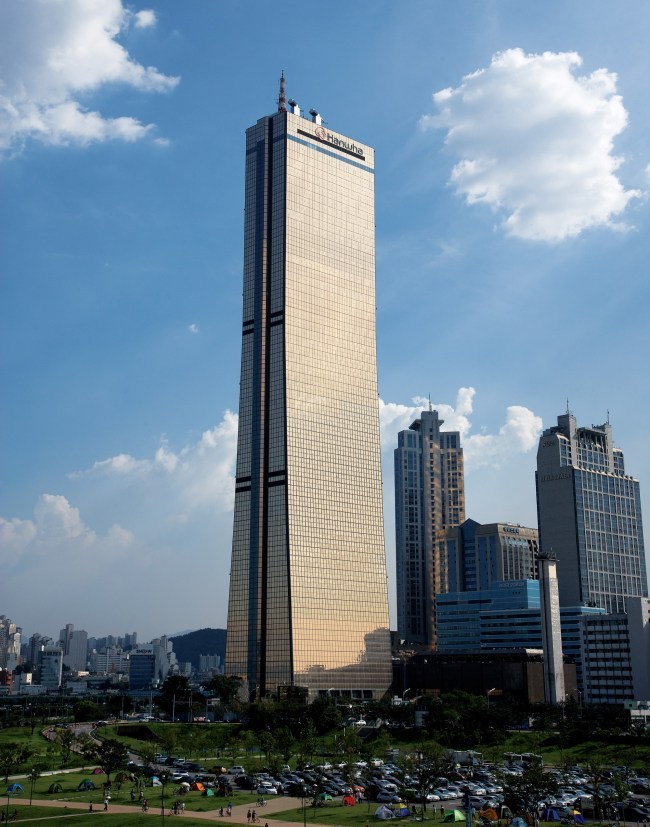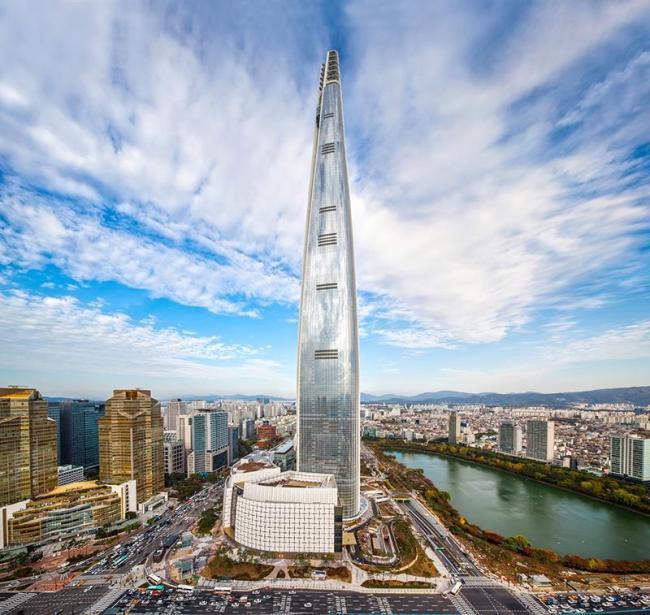Cloud-piercing skyscrapers filling the skylines are often held up as a symbol of a country’s economic power and technological development.
Korea’s first high-rise 63 Building located in Yeouido, western Seoul, opened doors to the public in July 1985 during the country’s rapid economic growth.
The 274 meter high, 63-floor building is no longer the tallest building here. But it stands as a landmark and a symbol of the so-called Miracle on the Han River.
After the 1997 Asian financial crisis the Korean economy recovered stability partly through a real estate boom, which fostered competition for high buildings.
Korea’s first high-rise 63 Building located in Yeouido, western Seoul, opened doors to the public in July 1985 during the country’s rapid economic growth.
The 274 meter high, 63-floor building is no longer the tallest building here. But it stands as a landmark and a symbol of the so-called Miracle on the Han River.
After the 1997 Asian financial crisis the Korean economy recovered stability partly through a real estate boom, which fostered competition for high buildings.

According to the Ministry of Land, Infrastructure and Transport, the number of high-rises 50 stories or higher was 102 as of 2016. There are also 11 skyscrapers taller than the 63 Building.
Buildings taller than 200 meters or with over 50 floors are defined as high-rise, according to the Council on Tall Buildings and Urban Habitat.
The glamorous 555-meter Lotte World Tower of 123 floors opened April this year now stands as the No.1 skyscraper here and the world’s fifth-tallest after Burj Khalifa in Dubai, the Shanghai Tower, the Makkah Royal Clock Tower Hotel in Saudi Arabia and One World Trade Center in New York, according to Korean retail giant Lotte Group.
Although Seoul has made a name for itself as an economically developed city with tall office buildings, it lacks a signature skyline like that of New York or Hong Kong due to tight government regulations.
“Many experts agree Korea needs a skyline that symbolizes the country’s economic and global status,” said Choi Chang-sik, professor of architectural engineering at Hanyang University.
“In order to do so the government needs to ease regulations when necessary.”
Choi added, safety-first high-rises are also convenient for populous cities like Seoul.
The standard height of buildings along Teheran Street in Gangnam, southern Seoul is 160 meters, about 50-floors high, according to Gangnam District Office.
There is also a 35-floor limitation on apartments along the Han riverside to prevent privatization of the right to a view.
Regions that are categorized as commercial and business areas, such as Yeouido in western Seoul, Yongsan in central Seoul and Jamsil in southern Seoul, are allowed to host buildings that are 50-floors or higher.
Due to such regulations, along with concerns over national security and public safety, it took some 30 years for Lotte Group to receive a permit to construct the Lotte World Tower.

The country’s military had opposed the new skyscraper, as Seongnam Airbase, a military installation south of Seoul, is located 6 kilometers from Lotte World Tower.
The Lee Myung-bak administration authorized the construction in 2009, with Lotte Group paying for the bill to adjust the angle of the airbase’s eastern runway by 3 degrees.
Lotte Group said the fifth-tallest skyscraper is expected to attract some 5 million tourists annually, totaling economic benefits of some 10 trillion won ($9.15 billion).
From suspicions surrounding the soundness of the architecture to the death of a construction worker on site and massive sinkholes in Jamsil, Lotte’s mega project was received with controversy among Koreans with some even believing the country had become subject to the so-called skyscraper curse.
In neighboring Samseong-dong of Gangnam, southern Seoul, leading automaker Hyundai Motor is slated to complete Korea’s all-time high 569-meter, 105-story building named Global Business Center by 2020.
The 560,611-square-meter plot of land for the landmark, 16 meters higher than Lotte World Tower, cost the company 10.5 trillion won.
With or without the concerns of the curse, Asia Development Bank forecasted the Korean economy to grow 3 percent in 2018, up 0.3 percentage points from the rate suggested in September.
By Kim Bo-gyung (lisakim425@heraldcorp.com)








![[Kim Seong-kon] Democracy and the future of South Korea](http://res.heraldm.com/phpwas/restmb_idxmake.php?idx=644&simg=/content/image/2024/04/16/20240416050802_0.jpg&u=)







![[KH Explains] Hyundai's full hybrid edge to pay off amid slow transition to pure EVs](http://res.heraldm.com/phpwas/restmb_idxmake.php?idx=652&simg=/content/image/2024/04/18/20240418050645_0.jpg&u=20240418181020)

![[Today’s K-pop] Zico drops snippet of collaboration with Jennie](http://res.heraldm.com/phpwas/restmb_idxmake.php?idx=642&simg=/content/image/2024/04/18/20240418050702_0.jpg&u=)